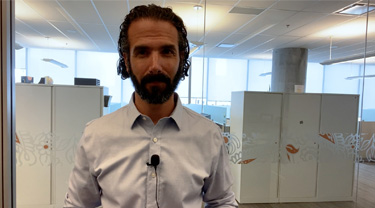Perspective is everything, or so we’re told. So, what do past business cycles tell us about what’s in store for the global economy today? And what can exporters do about it?
Business cycles are a part of the normal fluctuations experienced by all economies over time. An economic expansion is characterized by a virtuous cycle that sees rising output induce job gains, income growth, and increased sales. This, in turn, feeds back into further increases in production, employment, income and consumption. This ideal state will persist, and result in continued economic growth, as long as it becomes self-sustaining.
When an expansion can no longer sustain itself, a vicious cycle will set in, leading to a reversal in output, employment, income, and sales. This will cascade into further declines in output, spreading rapidly between industries and often across geographic regions.
Downturns can be instigated by several factors, including policy error. In the leadup to the Great Recession, an abundance of credit and weak regulatory oversight led to irrational exuberance around a number of asset types. The early 1990s recession was caused by a combination of the 1990 oil price shock, the debt accumulation of the 1980s, and growing consumer pessimism. External factors or black-swan events, such as pandemics, can also result in economic downturns. In addition to the COVID-19-induced crisis, witness the economic fallout of the 1918 Spanish flu.
You should also check out
EDC interactive tool offers economic insights on Canada’s Top 75 trading partners.
There’s no shortage of triggers that can precipitate an economic downturn. As the factors have varied over time, so, too, have the duration and intensity of the downturns. When we look into the data, we find that the duration of business cycles in the United States and Canada have tended to increase over time. In Canada, for example, business cycles over the last 50 years have lasted 11 years, on average. This compares to an average duration of only five years in the previous half century. In the U.S., business cycles have lasted an average of eight years over the past 50 years, compared with only five years in the previous period.
What’s more is that the average number of recessionary months has narrowed over time. In the U.S., between 2000-2020, the average duration of recessions fell to nine months, from 13 months over the 1930-1999 period. Similarly, in Canada, recessions lasted on average six months between 2000-2020, compared to 16 months previously. The 2020 recession was even shorter, at three months in Canada and two months in the U.S., thanks to the swift and co-ordinated policy response of fiscal and monetary authorities.
In the U.S., there have been seven recessions over the last 50 years. Five of those occurred at the same time as recessions in Canada, so providing a high degree of co-movement between the business cycles of our two countries.
The U.S. and Canada had just come off one of their longest-lasting business cycles of the past four decades, when COVID-19 interrupted more than 10 years of economic expansion. As our economies recovered from the pandemic, another cycle had begun, with activity in both countries jumping well-above pre-pandemic levels. But there are now elevated and increasing risks around the durability of the current expansion.
Supply-chain bottlenecks are constraining the supply of goods. Russia’s invasion of Ukraine has disrupted the flow of critical commodities. And resulting higher prices is eroding consumers’ wealth and ability to spend, prompting key central banks to slam on the monetary policy breaks. Together with a slowdown in China, weakening demand and confidence amid aggressive policy actions risk tilting our economies back into recession.
The bottom line?
It’s easy to bail when the market is flashing warning signs of impending danger, as we’re now currently experiencing. However, recent trends have shown that business cycle downturns are getting shorter, thanks to swift and co-ordinated policy responses.
While slowdown appears inevitable, and is in fact necessary in order to cool this overheating economy, policy-makers stand ready to manage the impact. This should reassure businesses to not abandon their long-term plans. Those who can ride out the bumps will find themselves ahead of the pack when the economy inevitably settles. Looking ahead, it’ll be important to plan for the long ride, while mitigating short-term fluctuations.
This week, a very special thanks to Prince Owusu, senior economist in our Economic and Political Intelligence Centre.
As always, at EDC Economics, we value your feedback. If you have ideas for topics that you would like us to explore, please email us at economics@edc.ca and we’ll do our best to cover them.
This commentary is presented for informational purposes only. It’s not intended to be a comprehensive or detailed statement on any subject and no representations or warranties, express or implied, are made as to its accuracy, timeliness or completeness. Nothing in this commentary is intended to provide financial, legal, accounting or tax advice nor should it be relied upon. EDC nor the author is liable whatsoever for any loss or damage caused by, or resulting from, any use of or any inaccuracies, errors or omissions in the information provided.





